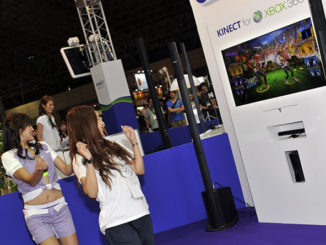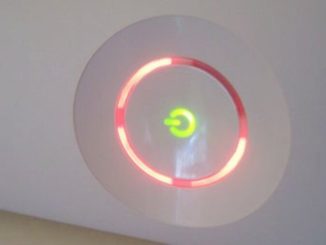
This Xbox Kinect review takes a look at the different components that make it a fun piece of technology.
Black-boxing Hardware: Part I of the Xbox Kinect review
The hardware is a combination of several distinctive technologies including an infrared sensor, a CMOS sensor and an RGB camera. The infrared sensor floods the gaming space with invisible light and enables depth perception along with the CMOS sensor. The sensor detects how infrared light is reflected onto the scene and transfers these grayscale images to the console. This also enables the detection of movement in 3D space.
The RGB camera is used for facial recognition as well as in-game snapshots and video chatting. These cameras are paired with four capsule microphones that have the ability to detect where your voice is coming from, as well as eliminating background noise. The console is also equipped with a motorized sensor that adjusts depending on the users height and distance from the said console.
When we pulled the unit out of the box for our Xbox Kinect review, the first thing we noticed is how lightweight it was. The heaviest part of the console is the base, which is trivial because it needs to support the whole system. The overall size of the unit makes it difficult to mount on most flat screen televisions. However, a mount can be purchased separately to make mounting easier. The unit is glossy black, a perfect match for its counterpart, the Xbox 360 S, which it was designed to work with. You simply need to plug in the unit to the Xbox 360 S expansion port and you are almost good to go. So far we have covered the hardware components in our Xbox Kinect review, the next is the setup.
Booting up the system: Part II of the Xbox Kinect review
In order to accomplish the Xbox Kinect review, we need to setup our system. As mentioned earlier, all you need to do is unbox the unit and connect it to the expansion port. The rest of the set-up will be handled by the software. The first time you turn on the unit, after connecting it to the Xbox, you will be greeted by a welcome screen that serves as the starting point for the guided set-up. There are several steps that are done on each screen. Most of them are used to calibrate the system, eliminate background noise and creates an acoustic map of the room you are using.
The next stage of setting up was the Kinect ID. It is a method of recognizing the user and signing in the user automatically. The process is done by posing in front of the sensor and copying the poses of the avatar on the screen. This process is dependent on the play size and may require you to pose in several different areas. This process in the Xbox Kinect review requires a few minutes and took the tester more than 20 minutes to finish all of the steps. As it turned out, eyeglasses needed to be removed to make a better facial match. All in all, the whole experience passed our standards for the Xbox Kinect review.
Proudly WWW.PONIREVO.COM



